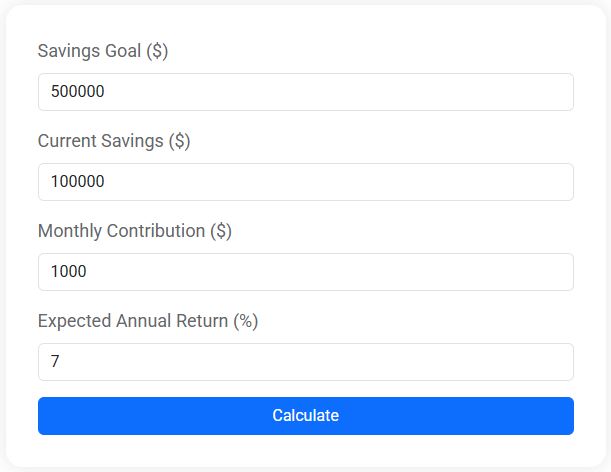The Art of Bargain Hunting: Finding Deals That Save You Money

Mastering bargain hunting can be a financial game-changer, allowing you to save significantly on everything from groceries to big-ticket items. Key strategies include conducting thorough research, timing your purchases with sales cycles, negotiating prices, utilizing coupons and cashback offers, and embracing secondhand shopping. By honing these skills, you can consistently find the best deals without sacrificing quality, ultimately improving your financial health.
Imagine walking out of a store, your shopping bags filled with everything you need—and some things you just wanted—and knowing you spent a fraction of what others might have paid. That's the thrill of bargain hunting. It's more than just a hobby or a way to pass time; for many, it's a strategic approach to saving money and improving their financial health. In today's world, where prices seem to be perpetually on the rise, mastering the art of finding great deals can be a game-changer.
But bargain hunting isn't just about grabbing the cheapest item on the shelf. It's about understanding value and timing, knowing when and where to look, and sometimes even haggling to get the best price. Whether it's your weekly groceries or a big-ticket item like a new sofa, the principles of smart shopping remain the same. Let's dive into the essential strategies that can help you become a savvy shopper who never pays more than necessary.
Research Before You Buy
In the digital age, information is power, and this is especially true when it comes to shopping. Before making any purchase, spend some time researching the product. This doesn't just mean comparing prices across different retailers, though that's certainly a start. Look at product reviews, both professional and consumer-generated, to get a sense of quality and reliability.
Websites like Consumer Reports or CNET can offer expert reviews, while platforms like Amazon or Best Buy often feature detailed customer feedback. Understanding the pros and cons of a product can help you decide if it's worth buying, even if it's on sale. After all, a bargain isn't really a bargain if the product doesn't meet your needs or expectations.
Additionally, consider setting up price alerts on sites like Honey or CamelCamelCamel for items you're interested in. These tools can notify you when the price drops, helping you snag the best deals without constant monitoring. By investing time in research, you can ensure you're making informed decisions that truly save you money in the long run.
Timing Is Everything
Sales cycles are a well-kept secret in the retail world, but savvy shoppers know how to exploit them. Most products have a time of year when they're discounted. For example, electronics often go on sale around Black Friday and Cyber Monday, while January is a great time to buy fitness equipment as retailers cater to New Year's resolutions.
Clothing tends to follow seasonal patterns, with end-of-season sales offering significant discounts. According to a report by CNBC, waiting for these sales can save you up to 50% on apparel. Furniture and home goods often see price reductions in January and July, when retailers are clearing out old inventory to make way for new collections.
By understanding these cycles, you can plan your purchases strategically. Keep a calendar of sales events and be ready to act when the time is right. Patience, as they say, is a virtue—and in the world of bargain hunting, it can also be quite profitable.
Savings Goal Calculator
Use our free Savings Goal Calculator to find out how long it will take to reach your savings target. See your timeline and how interest can help you grow faster.
The Power of Negotiation
Many people shy away from negotiating, fearing it might seem pushy or impolite. However, negotiation is a valuable skill that can lead to significant savings. While it might not be appropriate at big-box stores, many local shops, markets, and even some online platforms are open to haggling.
Start by asking if there are any discounts available. Sometimes simply inquiring can lead to a better deal. If you're buying multiple items, ask for a bulk discount. When shopping for big-ticket items, like furniture or appliances, don't hesitate to negotiate the price or ask for free delivery or installation services.
As financial advisor Jane Smith explains, "Negotiation is about understanding the value of what you're buying and being willing to walk away if the deal isn't right." Remember, the worst that can happen is the seller says no. More often than not, though, you'll find they're willing to make a concession to close the sale.
Coupons and Cashback Offers
Coupons might seem old-fashioned, but they're a tried-and-true method for saving money. In recent years, digital coupons have made the process even easier. Websites like Coupons.com or apps like Rakuten and Honey can help you find and apply discounts effortlessly.
Cashback offers are another fantastic way to save. Many credit cards offer cashback on specific categories, such as groceries or gas. Additionally, services like Ibotta or Rakuten provide cashback for shopping through their platforms. These small percentages can add up over time, effectively reducing your overall spending.
Don't forget to stack offers when possible. Use a coupon, pay with a cashback card, and shop through a cashback site to maximize your savings. It's a layered approach that requires some attention to detail but pays off with substantial returns.
Embrace Secondhand Shopping
Secondhand shopping is no longer just for the thrifty or environmentally conscious. It's become a popular, smart way to save money while finding unique items. Thrift stores, consignment shops, and online platforms like eBay or Facebook Marketplace offer everything from clothing to furniture at a fraction of the retail price.
Not only is secondhand shopping budget-friendly, but it’s also a more sustainable choice. As the saying goes, "One person’s trash is another person’s treasure." You'll often find items that are gently used or even brand new, at prices that are hard to beat.
Approach secondhand shopping with an open mind and a bit of patience. It might take a few visits or clicks to find exactly what you're looking for, but the savings make it worthwhile. Plus, the thrill of finding a hidden gem can be incredibly rewarding.
In conclusion, the art of bargain hunting is about more than just saving money—it's a lifestyle choice that requires patience, research, and strategy. By honing these skills, you can consistently find the best deals without sacrificing quality, ultimately improving your financial health and allowing you to enjoy more of what you love. Happy hunting!








